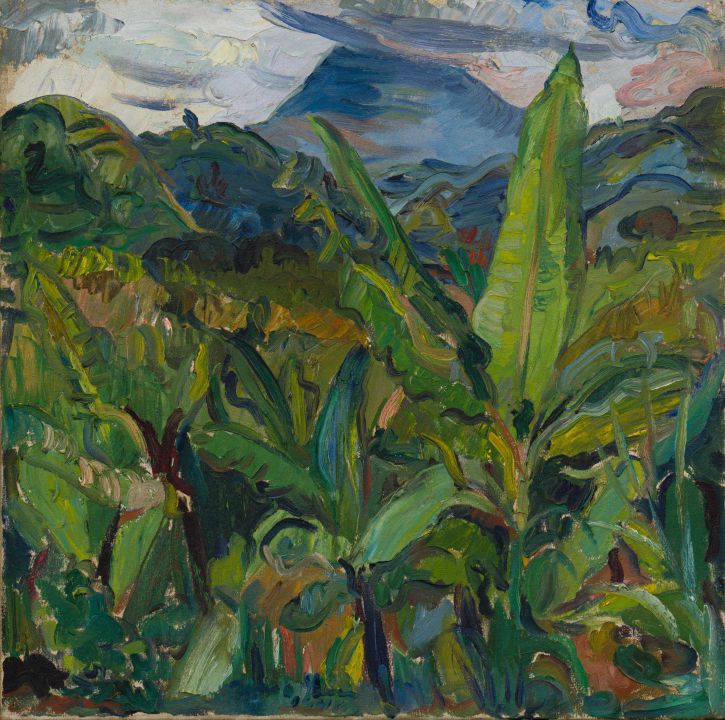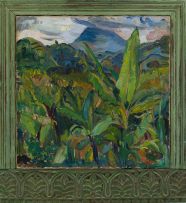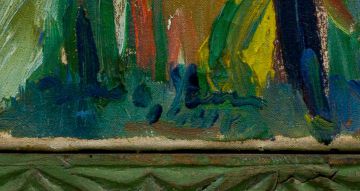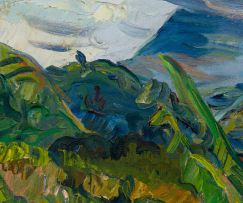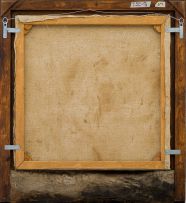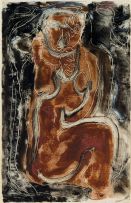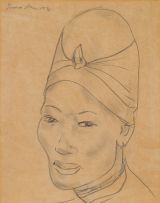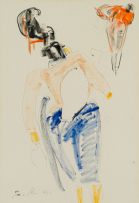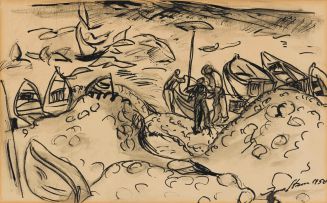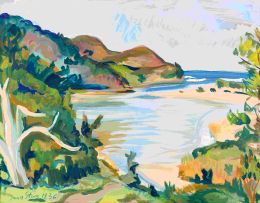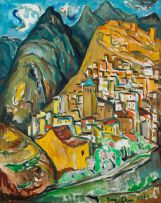Modern, Post-War and Contemporary Art and South African Fine Wine
Live Virtual Auction, 26 - 28 July 2020
Tuesday Evening Sale
Incl. Buyer's Premium & VAT
About this Item
signed and dated 1946
Notes
Best known for her energetic portraits and still lifes, Irma Stern also produced a considerable number of landscapes - in oil, gouache and tempera - throughout her career, enough to merit focus in a comprehensive 2003 survey exhibition in Johannesburg. Stern's earliest significant work in this genre dates from 1922. It depicts one of the twelve bridges on the then recently constructed Isipingo-Umzinto line of the South Coast railway, at Umgababa, a beach resort south of Durban where Stern also produced her formative figure studies. At a time when artistic practice and cultural debate held landscape portrayals in highest esteem, especially picturesque and heroic studies of unsullied and empty panoramas, Stern charted a different course in her practice. Wilhelm van Rensburg, curator of the 2003 exhibition, notes how, right from the outset, Stern was 'aware of the intrusion of colonial culture and modes of political economy present in nature.1
The present lot, made during the artist's second visit to the Belgian Congo (now Democratic Republic of Congo) in 1946 and depicting a banana plantation, most likely in the Lake Kivu region, reiterates this insight. By 1946, table bananas - along with sugar, palm oil, coffee, cocoa, rubber, tea, and tobacco - formed an important, if globally marginal, contribution to Belgian Congo's overall agricultural economy.2 Cultivation was split between large agri-enterprises and peasant farmers who staggered planting in forested environments in the wet foothills. Working en plein air, Stern produced a number of landscapes descriptive of Belgian Congo domesticated wilderness. The erect fronds in the foreground of this lot are her principal subject, albeit camouflaged by a recessive landscape of vegetable greens that ultimately yields to alpine blues and an informal sky redolent of John Constable's experimental cloud studies from the 1820s.
Although frequently eulogised as an expressionist painter, Stern's landscapes from her triumphant middle period (1931-1946), reveal her impressionist methods. Her colours are engines of form. While her brushwork assiduously denotes things - foliage, mountains, sky - Stern does not subordinate her mark making to representation. She was a painter of impressions, not a photographer documenting and inventorying things. Joseph Sachs in 1942 praised the masterly way she simplified nature. Stern's skill, thought Sachs, was 'putting down on the canvas the general impression of a landscape - the impression which is the emotional response to the visual impact rather than the accumulation of material detail'.3 Sachs favourably compared her to Gauguin and Cezanne, flattery that Stern often sought and projected. It bears noting, however, that her Congo landscapes share greater affinity with lesser-known French orientalist painters working in a post-impressionist idiom, as well as with Clement Serneels, who worked contemporaneous to Stern in Belgian Congo.
1. Wilhelm van Rensburg (2003) Irma Stern: Expressions of a Journey, Johannesburg: Standard Bank Gallery, page 15.
2. Vladimir Drachoussoff (1965) 'Agricultural Change in the Belgian Congo: 1945-1960', in Food Research Institute Studies, Stanford University, Food Research Institute, Vol. 5(2), pages 1-65.
3. Joseph Sachs (1942) Irma Stern and the Spirit of Africa, Pretoria: JL van Schaik, page 39.
